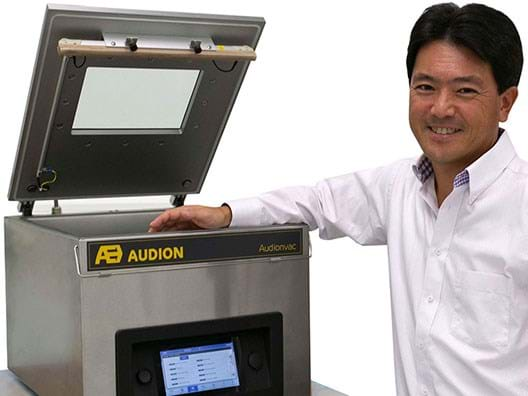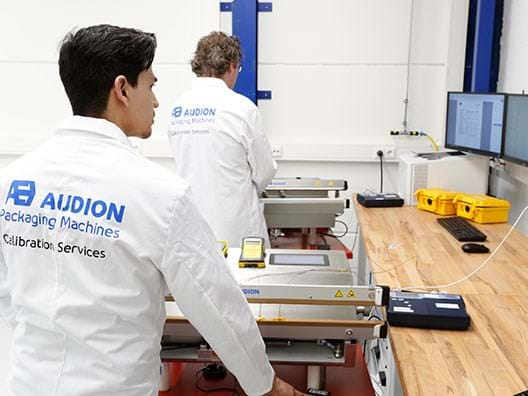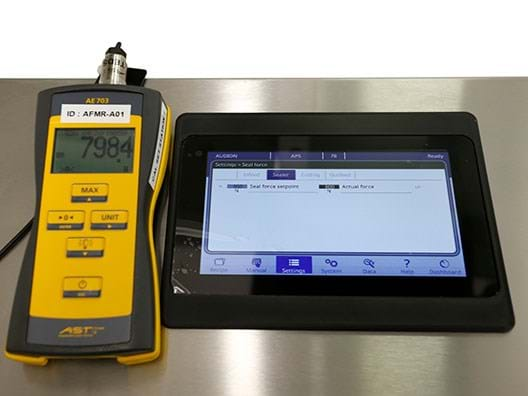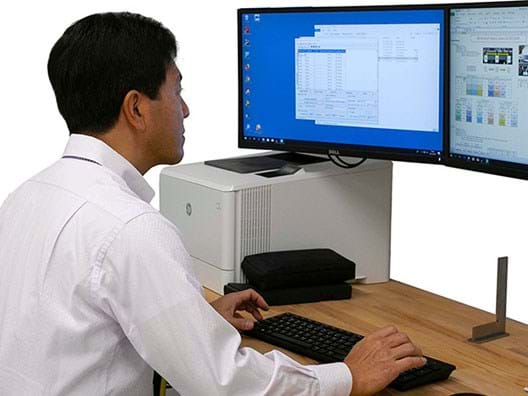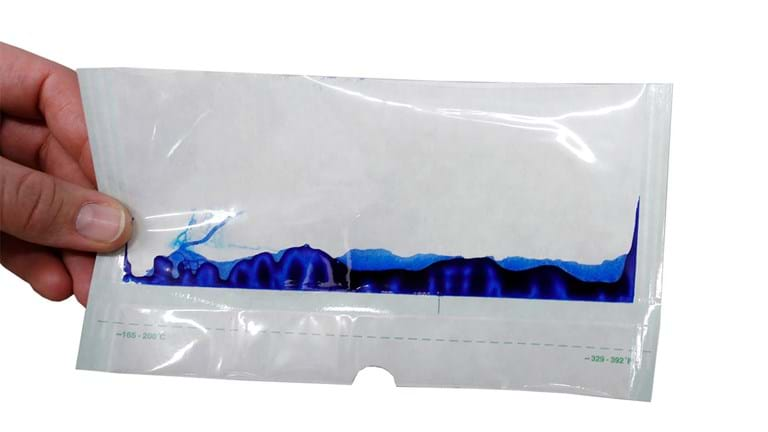Mr. Tatsuo Yamamoto expert in calibration and validation
At Audion Packaging Machines’ offices, we have a conversation with Tatsuo Yamamoto, an employee for almost 20 years. Both in the organization and the market he is known as the expert on the calibration of machines and process validation. Interesting fact: he does not have a technical background and instead studied Economics in Japan. His first job at Audion Packaging Machines was not a technical one, he joined the company as Sales Manager for the Japanese market. We discuss how he became an expert in the field of calibration and validation, why this is so important in medical and pharma markets, for example, and what his expectations are for the future.
From sales manager to an expert in calibration and validation
And even today, the title on his business card is still Sales Manager Japan, a job he still clearly enjoys. But the largest part of his time is spent on other matters. The unique machine he encountered in 2009 is what he points out as the primary cause for this change.
That machine is the peel-tester, an inspection machine for measuring the average and maximum seal strength. He was captivated the moment he came into contact with this machine and started researching the possibilities. In medical and pharma markets, then and now, validation is held to the highest standard. Each sterile packaging has to comply with the requirements in order to prevent contamination. Contamination of a sterile (operating) environment is a great risk and needs to be avoided at all times.
The seal of a medical pouch is an important part of the complete packaging. If a seal is too weak or too strong, contamination risks cannot be excluded. A seal that is too weak might allow the pouch/package to open unwanted and, in a non-sterile environment, lose its sterility. A seal that is too strong might cause the packaging to tear at non-predetermined areas, allowing fibers of the packaging material to pollute the sterile contents.
The seal quality should be constant and in line with the documented requirements. If something is wrong with the seal (quality) the process must be stopped and the manager or administrator must be informed immediately. The logged data must be available so that it’s possible to verify what was wrong.
“An interesting fact is that the demand for validated seal processes in Japan is lower than in Europe. This is because of a cultural difference between Japan and Europe. If you ask a Japanese worker to make a good seal, they will concentrate on doing so, every time. But in my opinion, that’s not enough. Even the best operators using the best packaging materials, can’t guarantee the consistency of the quality, that is so important for the medical market, unless the sealer is validatable.”
There is no good description for my function, some will say IQ/OQ specialist but that is not completely accurate. I am involved in software development, but I am not a programmer. I would describe my function as a customer requirement specialist with a focus on the medical market.
My job begins when a (medical) customer sends Audion Packaging Machines a User Requirement Specification (URS). I study the requirements and advice the customer on the correct hardware selection, software configuration and validation protocol.
After programming the required customer-specific seal processes into the machine and software, the machine and configuration is calibrated. Audion Packaging Machines has high-end, in-house calibration facilities.
The phase in which the machines is delivered to the customer is known as Installation Qualification (IQ). Together, we verify that the instrument or equipment has been qualified, delivered correctly and installed and configured in accordance with the specifications and installation checklist. After receiving approval, Operational Qualification (OQ) serves as a check that the equipment’s performance is consistent with the user requirement specification and within the manufacturer-specified operating ranges. During the OQ phase, all the items in the test plan are tested individually and their performance is documented.
Power Sealer Plus
The machine that is used in medical and pharma markets is Power Sealer Plus, a customized version of the Power Sealer. The same machine that is used in less demanding markets but configured with some very innovative specs called ATC (Audion Temperature Controller) and ADC (Audion Display Controller). When equipped with both we call it (ATT) Audion Touch Techware. The Power Sealer Plus is now equipped with the correct hard- and software and is optimized for demanding markets that require a validated sealing process.
“ADC: Audion Display Controler + ATC: Audion Temperature Control = ATT: Audion Touch Techware”
The option of having different access levels is very important in validating seal procedures. With Audion Touch Techware, an administrator can create and save their own validated “seal recipes”. The operator that is working with the machine can only select those premade “seal recipes”.
How does it work?
When you set the desired temperature on the controller (ADC), the temperature system (ATC) is programmed to send a certain output of energy to the sealing wires. The system regulates the temperature by measuring the resistance of the seal wire circuit.
Temperature is the most important factor, but we also control and monitor other factors as sealing time and sealing pressure (force of the seal wires being pushed on each other). In this diagram you see the sealing process of the Power Sealer Plus.
The figure represents the complete seal cycle, from heating to closing and sealing and finally the cooling down and opening of the seal bars. The blue line is the temperature, the red line is the force (pressure). First the temperature in the seal bars start to increase. after reaching the right temperature the seal bars close, after which the sealing time starts to count. The system measures the average temperature and average force until the end of the programmed sealing time. After that, the temperature will cool down to the setpoint of the cooling temperature and, once it reaches the setpoint, the bar opens.
Power Sealer Plus presents a complete process monitoring of:
- Seal temperature
- Seal force
- Effective seal time.
Process monitoring
The ISO 11607-2 norm is about seal process validation. Critical process parameters within this norm for impulse sealers are sealing temperature, sealing force (pressure), sealing time. These parameters need to be controlled and monitored. Monitored process parameters means that it has to have an alarm function. The Power Sealer Plus is equipped with an alarm function on all 3 parameters
Sealing time cannot be regulated or monitored. The sealer does not shorten or extend the sealing time according to the status of the process. What we have realised is a system to monitor the effective seal time, which is the sum of the programmed sealing time and the extra time beyond the programmed time until the temperature leaves the process window. There is no impulse sealer in the world offering such a unique way of process monitoring.
Audion Touch Techware is on the market now for about 2 years and is a real innovation. In the medical market, the Power Sealer Plus has already proven itself but Audion Touch Techware can be of added value in every market where controlled and monitored sealing parameters are required.
Future
In the near future, our machines will be connected to the internet (IOT) and this makes it possible to visualize the results anytime and everywhere. Therefore, QA managers can remote control and log the seal machines even if they are located at other locations. Data on calibration, use of the seal recipes and maintenance will be provided to the QA manager. This data can be used to optimize processes and ensure the quality of the seal and packaging processes.
USP’s Audion Packaging Machines Power Sealer Plus
- 3 controlled and monitored parameters
- Advice on and verification of sealing parameters
- Customer specific protocol and seal recipes
- Inhouse calibration
- IQ/OQ services
